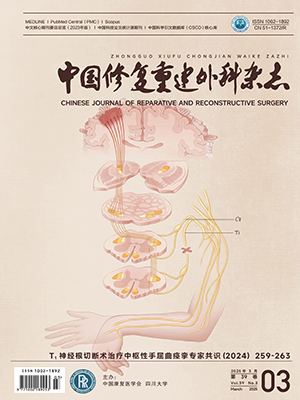Injury of dorsal root ganglia (DRG) may cause sensory and motor dysfunction. In order to investigate the changes of somato-sensory evoked potential (SEP) and histological characteristics of DRG in different causes and different periods of injury, fifty-two rabbits were chosed to build the models. The rabbits were divided into 4 groups: Control group (n = 4); mechanical compressing group (n = 16); inflammatory injury group (n = 16); and treatment group (2% lidocaine with hydroprednisone was administered locally, n = 16). After one to eight weeks, SEP was determined and samples of DRG were obtained to observe the histological and ultrastructural changes every week. The result showed that the gap junction of microvascular endothelium in DRG had been destroyed by the mechanical compression was the major cause of the vessel permeability increasing. The increasing of endothelial pinocytic vesicles transportation and widening of endothelial gap junction were the main causes of inflammatory irritation of DRG. The local infiltration with 2% lidocaine and hydroprednisone could obviously ameliorate inflammatory injury in DRG.
Citation: Zhou Yue,Liao Weihong,Mei Fangrui et al.. HISTOLOGICAL AND ELECTROPHYSIOLOGIC CHANGES OF INJURY OF DORSAL ROOT GANGLIA. Chinese Journal of Reparative and Reconstructive Surgery, 1998, 12(3): 145-149. doi: Copy
Copyright © the editorial department of Chinese Journal of Reparative and Reconstructive Surgery of West China Medical Publisher. All rights reserved




